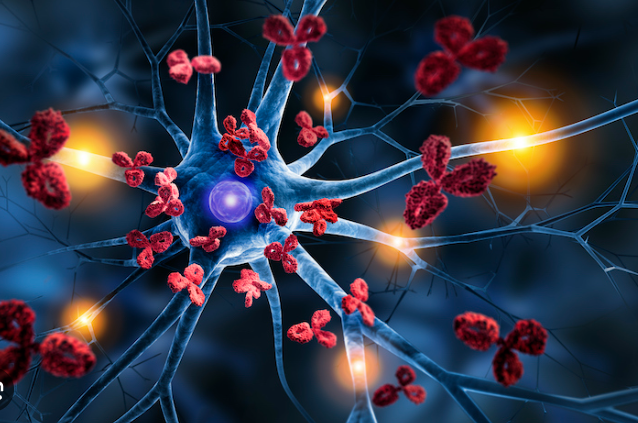Know the basics of symptoms, diagnosis, and treatment to help you battle multiple sclerosis.
“Imagine this: You disconnect your cell phone from its charger as you get ready for a busy day. But even though it has been connected all night, you notice the battery is only partially charged. You look at the cord and notice a spot where the insulation has been stripped away and the wires inside are exposed. Because the path by which the current travels is damaged, not all of the electricity sent from the outlet reached its target, your phone.” This is an apt analogy the Multiple Sclerosis Foundation uses to explain what’s happening in the nervous systems of the estimated 400,000 Americans who have multiple sclerosis, an unpredictable, often disabling disease of the central nervous system.
The exact cause of this chronic and incurable disease is unknown. The National Multiple Sclerosis Society reports that “scientists believe the disease is triggered by an as-yet-unidentified environmental factor in a person who is genetically predisposed to respond.”
Also read–Breast cancer : A Patient’s Guide to Breast Cancer
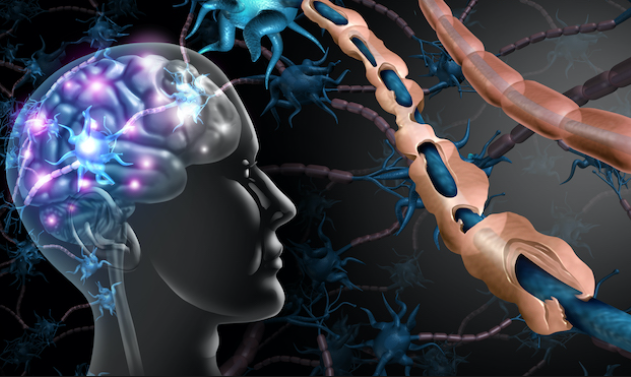
Being an autoimmune disease, multiple sclerosis (MS) causes the immune system—which is meant to defend the body against external threats—to become confused and begin attacking its own tissues. The fatty substance called myelin, which coats the wire-like nerve fibers that carry messages to and from the brain, is damaged when the immune system assaults the spinal cord in multiple sclerosis. Myelin damage results in scarring (the Greek word “sclerosis” means “scars”), and the more (many) scars you have, the worse the condition gets.
According to the Mayo Clinic website, “myelin can be compared to the insulation coating on electrical wires.” “Messages that travel along a nerve may be slowed or blocked when the protective myelin covering is damaged and the nerve fiber becomes visible. Additionally, the nerve could damage itself.”
These disruptions in the body’s communication system can result in erratic symptoms that differ greatly among patients. The diagnosis of multiple sclerosis (MS) can be challenging due to the wide range of potential symptoms, their intermittent nature, and their individual variability.
Signs and symptoms and multiple sclerosis
Typical MS symptoms and indicators include:
- Pain
- Numbness
- Tingling
- Fatigue
- Memory problems
- Mood changes
- Blindness
- Balance issues
- Dizziness and vertigo
- Bladder and bowel problems
- Depression
- Sexual problems
- Cognitive changes
- Paralysis
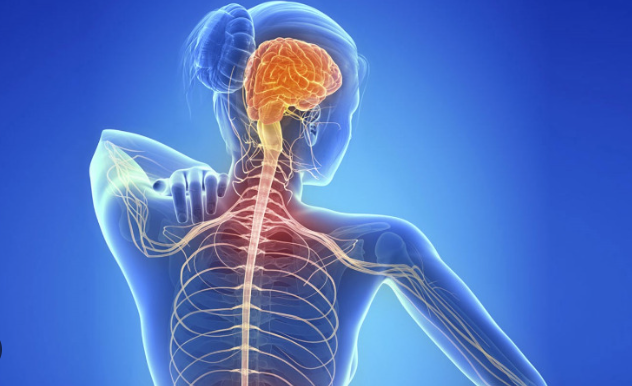
According to Dr. Lauren Krupp, a neurology professor and the head of NYU Langone’s Multiple Sclerosis Comprehensive Care Center, “some symptoms are dramatic, like vision involvement or extreme fatigue, and others are subtle, like temporary tingling or numbness in a hand or foot.”
Headache, hearing loss, breathing issues, itchiness, tremor, seizures, trouble speaking, and difficulties swallowing are some less frequent symptoms.
Speak with your doctor if you encounter any of these symptoms and are unsure of their cause.
Types
As with many other chronic conditions, MS isn’t just a single disease. The National MS Society reports there are four “disease courses” for MS: clinically isolated syndrome (CIS), relapsing-remitting MS (RRMA), primary progressive MS (PPMS), and secondary progressive MS (SPMS).
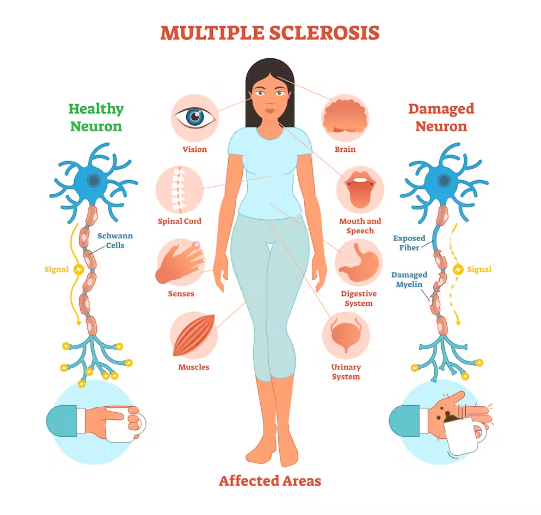
Risk factors
While the exact cause of multiple sclerosis remains unknown, there are risk factors that can raise your risk of contracting the illness. According to the Mayo Clinic website, women are roughly twice as likely as men to develop multiple sclerosis (MS), which typically strikes between the ages of 15 and 60. A family history of multiple sclerosis (MS) may also raise your risk; individuals of Caucasian ancestry, especially those from Northern Europe, have a higher incidence of MS than those with Asian, African, or Native American ancestry. Low levels of vitamin D are thought to play a role in the onset of multiple sclerosis.

Environmental factors, including the literal environment, may also come into play. “MS is far more common in countries with temperate climates, including Canada, the northern United States, New Zealand, southeastern Australia, and Europe,” the Mayo Clinic reports.
Some viral infections, including Epstein-Barr, have also been linked to MS. Having thyroid disease, Type 1 diabetes, or inflammatory bowel disease (all of which are also autoimmune disorders) also elevates your risk slightly.
Lastly, smoking has been associated with a higher incidence of MS.
Diagnosis
An individual test cannot identify MS. In order to rule out other potential issues (such as other autoimmune diseases, vitamin deficiencies, spine conditions, and other potential culprits) and arrive at an MS diagnosis, your doctor will instead take a thorough medical history and perform blood tests. According to the National MS Society, “the physician must: in order to make a diagnosis of MS.

- “Find evidence of damage in at least two separate areas of the central nervous system, which includes the brain, spinal cord and optic nerves, AND
- “Find evidence that the damage occurred at different points in time AND
- “Rule out all other possible diagnoses.”
To do this, you’ll undergo a neurological exam and physical testing to evaluate your mental, emotional, and language functions, balance and coordination, reflexes, gait, and vision. You’ll likely have tests done to evaluate the electrical activity in the brain and an MRI—a non-invasive imaging test that creates images of the brain and spinal cord. Your doctor may also examine your cerebrospinal fluid with a spinal tap.
Treatment
MS is not curable, but it is manageable. Patients may fare better if aggressive treatment is initiated as soon as possible. The usual goals of treatment are to control symptoms, minimize the rate of disease progression, and hasten the recovery from attacks. “Medications, behavioral modification, and rehabilitation are effective treatments for the most common symptoms of multiple sclerosis,” says Dr. Bardia Nourbakhsh, an assistant professor of neurology at Johns Hopkins Hospital in Baltimore.
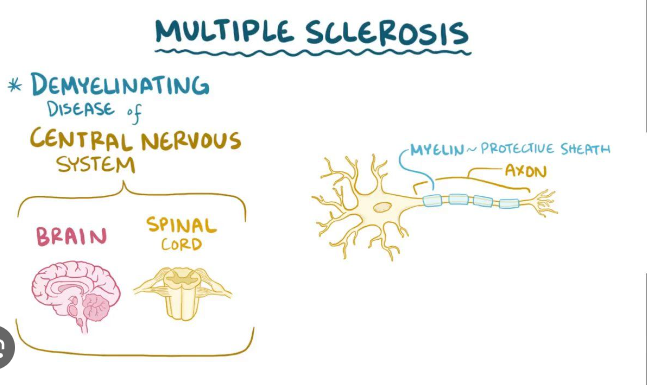
For those who need treatment for MS attacks, oral steroids can reduce nerve inflammation. Some patients also have plasma exchange, a procedure in which the liquid part of the blood is separated from the blood cells. The blood cells are then mixed with a protein solution and put back into the body.
Many drugs, such as beta-interferons and immunosuppressants that change the way the immune system functions, are available to help slow the disease’s progression. In order to facilitate better movement, patients may also be prescribed muscle relaxants and physical or occupational therapy. Other prescriptions might also be given to you in order to help manage specific symptoms, like fatigue and bowel issues.
Also read-HIV/AIDS : A Patient’s Guide To HIV/AIDS And Its Symptoms
images source: Google
Disclaimer: The opinions and suggestions expressed in this article are solely those of the individual analysts. These are not the opinions of HNN. For more, please consult with your doctor.







